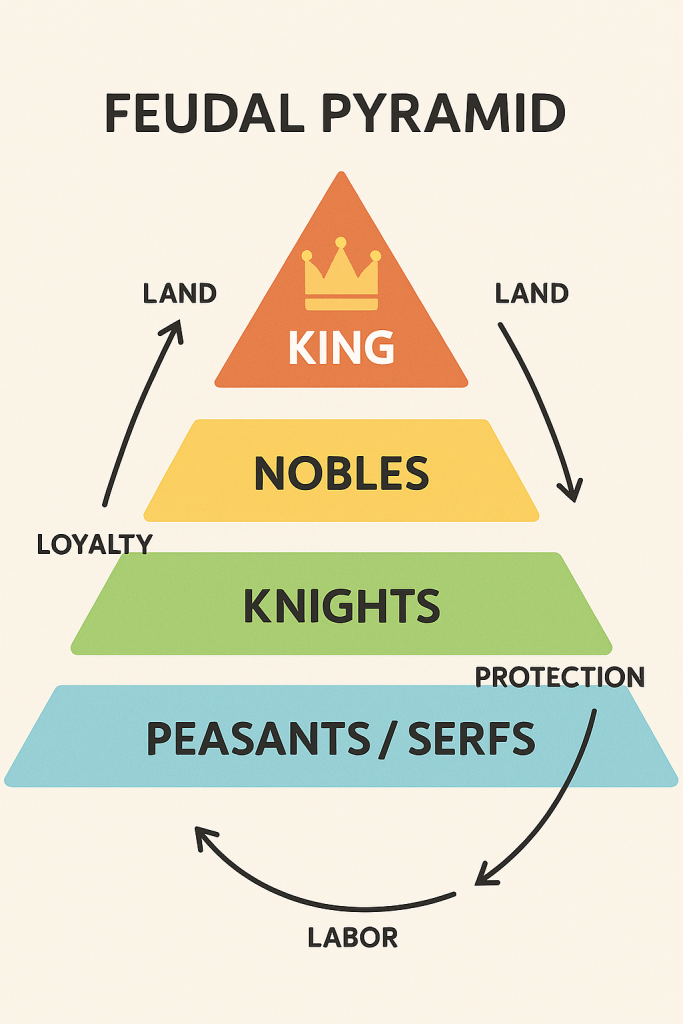
As the Roman Empire collapsed and central authority was rendered weak, Western Europe sank into an era of insecurity with the relentless invasions. As a reaction to this disorder, a new form of reciprocal dependence came into being: feudalism. A decentralized arrangement, it was founded on the gift of land, termed a fief, in exchange for service and loyalty. This was an affordable option for land-rich, but money-poor, lords to raise the warriors they required to protect their territory.
The hierarchical pyramid
The king sat atop the social pyramid and held all the land, theoretically. The king granted vast portions of his land to his most powerful adherents, the barons or nobles, in return for military service and their loyalty. These nobles then became lords to their own vassals, typically knights, in whose favor they would swear oaths of loyalty and give military protection. This complex system of obligations and alliances upon a ladder of loyalty through land.
Life on the manor
At the bottom of the feudal pyramid were the peasants and serfs who made up the bulk of the population. They were not part of the vassalage system proper, yet their labor was the economic foundation of the feudal system. In exchange for plowing the lord’s land, serfs were given protection and a small plot of land to plow for themselves. Their lives were tough, and they were legally bound to the land, with little or no social mobility.
The collapse of fuedalism
Feudalism later weakened in the Middle Ages due to a variety of significant factors. Political development like that of England’s Magna Carta constrained the power of the king and set up precedents for human rights. The catastrophic labor shortage caused by the Black Death gave surviving peasants greater bargaining leverage to demand better wages and opportunities. The Hundred Years’ War, which saw the rise of national forces and new technology in the form of the longbow, also shifted military authority away from local lords.
A legacy of change
Feudalism might have provided a degree of stability in an otherwise unsettled period, but it was ultimately a restrictive and unchanging system. The growth of a merchant class, urban centers, and the money economy further eroded the antiquated land-for-service system. Feudalism was not dismantled overnight but rather withered over the span of centuries as it gave way to the centralized monarchies and market economies that would define the early modern period.